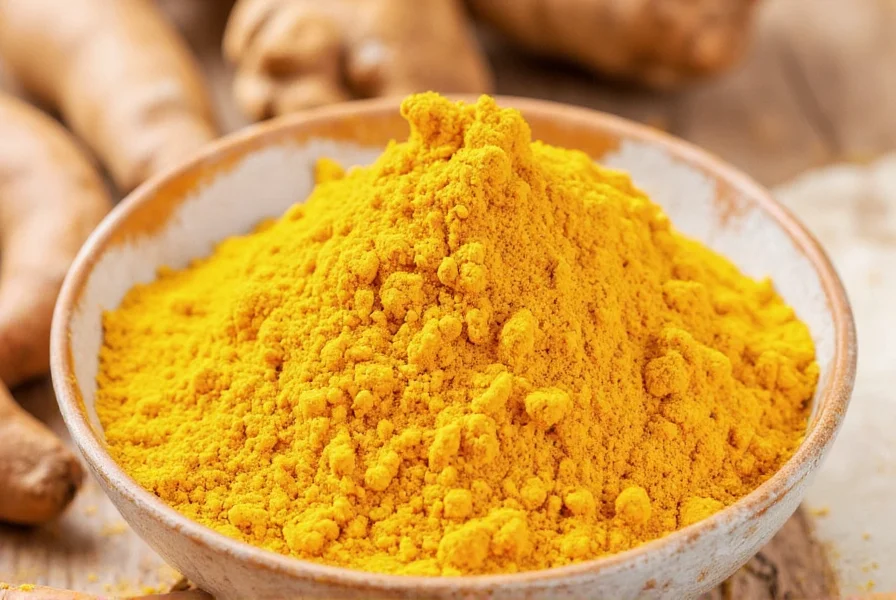Understanding turmeric's shelf life is essential for maximizing both flavor and potential health benefits. While turmeric won't make you sick when past its prime, its effectiveness diminishes significantly over time. This comprehensive guide explains exactly what happens to turmeric as it ages, how to recognize when it's no longer at its best, and proven storage methods to extend its usable life.
Understanding Turmeric Expiration vs. Potency Loss
When discussing whether does turmeric expire, it's crucial to distinguish between actual spoilage and potency degradation. Turmeric contains curcumin, the active compound responsible for both its vibrant color and potential health benefits. Over time, exposure to light, air, and moisture causes curcumin levels to decline, reducing both flavor intensity and potential therapeutic properties.
Unlike perishable foods that become unsafe when expired, dried turmeric powder remains microbiologically stable for years when stored properly. The primary concern isn't safety but diminished quality. Most manufacturers print a 'best by' date rather than an expiration date, indicating when the spice will be at its peak flavor and potency.
Turmeric Shelf Life by Form
Different forms of turmeric have varying shelf lives. Understanding these differences helps you manage your spice inventory effectively and avoid wasting this valuable ingredient.
| Turmeric Form | Unopened Shelf Life | Opened Shelf Life | Signs of Degradation |
|---|---|---|---|
| Ground turmeric powder | 3-4 years | 2-3 years | Faded color, weak aroma, flavorless when tasted |
| Fresh turmeric root | N/A (perishable) | 1-2 weeks refrigerated | Soft spots, mold, shriveling, slimy texture |
| Turmeric supplements | 2-3 years | Check container | Color changes, unusual odor, broken seals |
| Turmeric paste | N/A (perishable) | 1-2 weeks refrigerated | Mold growth, sour smell, separation |
How to Tell If Your Turmeric Has Gone Bad
While does turmeric expire in terms of safety is rarely an issue, recognizing when it's past its prime ensures you get the most from this valuable spice. Here's what to check:
Visual Inspection
Fresh turmeric root should have a vibrant orange-yellow color with smooth, firm skin. Discard if you notice:
- Significant mold growth (white, green, or black spots)
- Excessive softness or mushiness
- Dark discoloration beyond normal aging
- Severe shriveling or drying out
For ground turmeric, compare the color to fresh turmeric powder. Significant fading from bright yellow-orange to a dull mustard color indicates substantial potency loss.
Sensory Testing
The most reliable method to assess turmeric quality is sensory evaluation:
- Smell test: Fresh turmeric should have a warm, earthy, slightly peppery aroma. If it smells musty, stale, or nearly odorless, it's lost significant potency.
- Taste test: A small pinch should deliver noticeable warmth and bitterness. If it tastes bland or dusty, it's past its prime.
- Color test: Mix a small amount with warm water or oil. Fresh turmeric creates a vibrant yellow-orange hue. Weak color indicates degraded quality.

Maximizing Turmeric Shelf Life: Storage Best Practices
Proper storage dramatically extends how long does turmeric last while preserving its beneficial compounds. Follow these evidence-based storage methods:
For Ground Turmeric
- Store in an airtight container away from light, heat, and moisture
- Dark glass or opaque containers outperform clear plastic
- Keep in a cool, dark cupboard (not above the stove or near dishwasher)
- Never store in the refrigerator (causes moisture absorption)
- Buy whole turmeric root and grind as needed for maximum freshness
For Fresh Turmeric Root
- Store unpeeled roots in the refrigerator's crisper drawer
- Wrap in paper towels inside a perforated plastic bag
- Alternatively, store submerged in water in a sealed container (change water every 2 days)
- Freeze for long-term storage: peel, slice, and freeze in airtight containers

Safety Considerations: Is Expired Turmeric Dangerous?
One of the most common questions about does turmeric expire concerns safety. Properly stored dried turmeric powder rarely becomes unsafe to consume. Unlike moist foods, the low moisture content prevents bacterial growth.
However, discard turmeric immediately if you notice:
- Visible mold (any color)
- Significant insect infestation
- Unusual odors (sour, musty, or chemical-like)
- Moisture or clumping in powder (indicates water exposure)
Fresh turmeric root that develops mold or becomes slimy should be discarded. While small mold spots can sometimes be cut away from firm produce, turmeric's dense structure makes complete mold removal difficult, so it's safest to discard moldy roots entirely.
When to Replace Your Turmeric
While expired turmeric won't harm you, using degraded turmeric affects both culinary results and potential health benefits. Replace your turmeric when:
- It fails the smell and taste tests described earlier
- Recipes require noticeably larger amounts to achieve desired color
- Supplements show visible changes in pill color or texture
- More than 3 years have passed since opening (for powder)
For maximum benefit, consider buying smaller quantities more frequently rather than large containers that sit unused for extended periods. This approach ensures you always have turmeric at its peak potency.
Frequently Asked Questions
Does turmeric powder actually expire and become unsafe to eat?
Turmeric powder doesn't expire in terms of safety when stored properly, but it gradually loses potency and flavor. Properly stored turmeric powder remains safe to consume for 2-3 years past its 'best by' date, though its color, aroma, and potential health benefits diminish significantly over time.
How can I tell if my turmeric has gone bad?
Check for visual changes (faded color in powder, mold or soft spots in fresh root), smell (should have earthy aroma - musty or odorless indicates degradation), and taste (should be warm and slightly bitter - bland means it's lost potency). Fresh turmeric that's slimy, has significant mold, or smells sour should be discarded.
What's the best way to store turmeric to maximize shelf life?
Store ground turmeric in an airtight, opaque container in a cool, dark cupboard away from heat and moisture. Never refrigerate dried spices. For fresh turmeric root, store unpeeled in the refrigerator's crisper drawer wrapped in paper towels inside a perforated plastic bag, or submerged in water with regular water changes.
Does expired turmeric lose its health benefits?
Yes, the active compound curcumin degrades over time, especially when exposed to light, air, and moisture. After 2-3 years, turmeric powder may retain only 20-30% of its original curcumin content, significantly reducing potential health benefits while also losing flavor and color intensity.
Can I still use turmeric that's past its expiration date?
Yes, if there are no signs of spoilage (mold, insects, unusual odors). While it won't make you sick, expired turmeric will have diminished flavor, color, and potential health benefits. You may need to use larger quantities to achieve the same effect in recipes, but it's generally better to replace significantly expired turmeric for optimal results.










 浙公网安备
33010002000092号
浙公网安备
33010002000092号 浙B2-20120091-4
浙B2-20120091-4